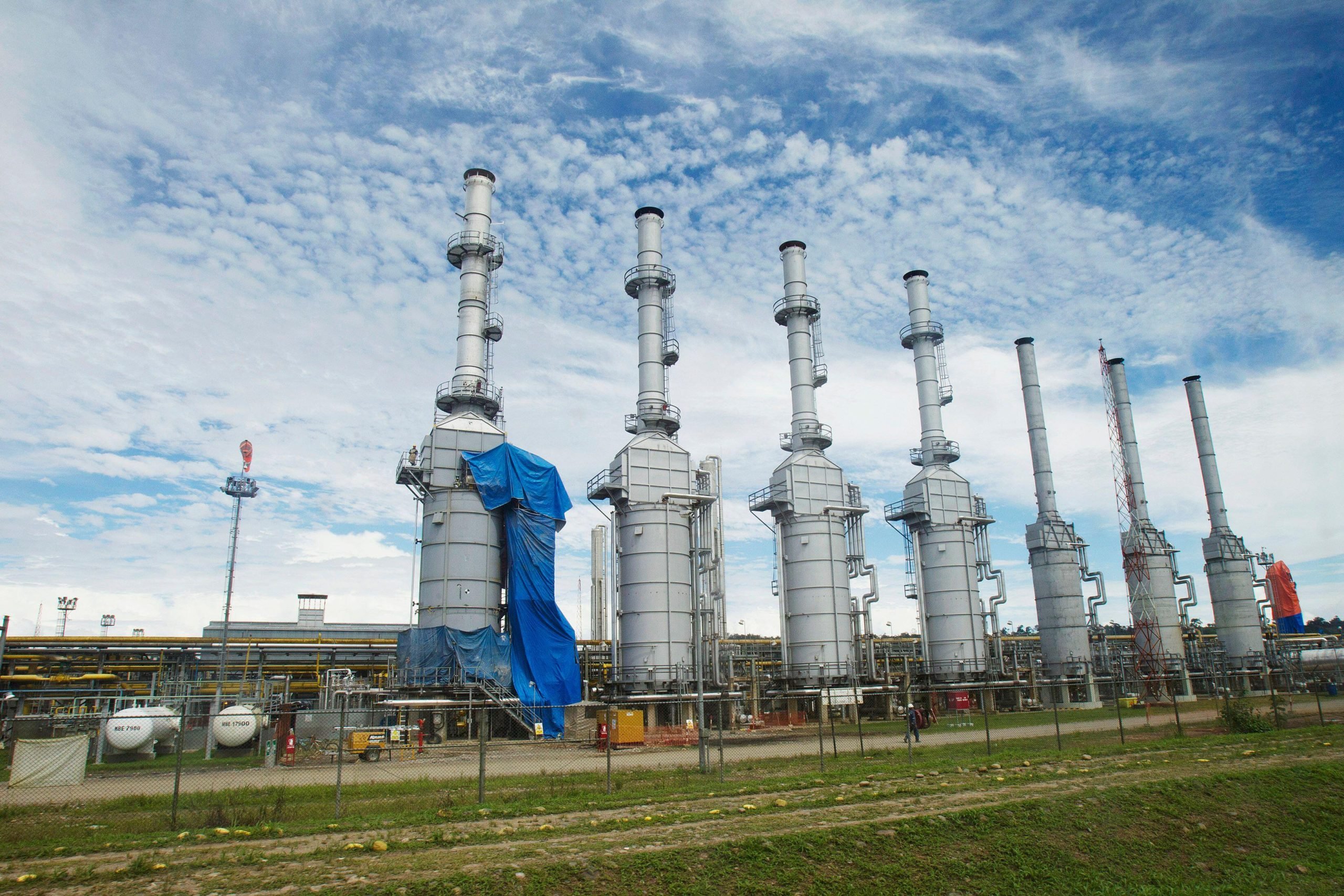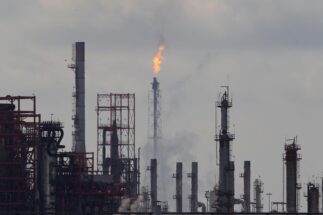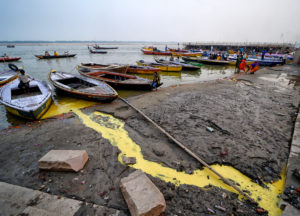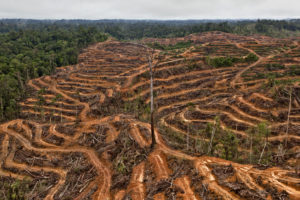Despite enormous potential for developing renewable energies, Latin American governments have in recent decades turned to the development of natural gas – a fossil fuel that, though less polluting than coal, still creates significant greenhouse gas emissions.
31%
The percentage of primary energy supply derived from natural gas in Latin America and the Caribbean in 2020
The importance of gas has been increasing over time: it accounted for 31% of the region’s total primary energy supply in 2020, according to data from the Latin American and Caribbean Energy Information System (sieLAC). In 2000, this figure was 24%.
This growth has been especially visible in Mexico, Bolivia, Argentina, Venezuela and Peru, which are currently the main producers in Latin America. Venezuela has almost 70% of the region’s proven gas reserves, while Argentina has enormous unconventional resources, especially at Vaca Muerta, a formation in the country’s Neuquén basin.
If its current development trajectory continues, gas could replace hydropower as the main source of electricity generation in the region by 2030, according to an analysis by the United Nations Environment Programme (UNEP). This would delay the region’s energy transition, experts say.
“It is the fuel that has grown the most in its expansion, despite the fact that there are cheaper and more sustainable alternatives,” said Gustavo Máñez, UNEP’s climate change coordinator for Latin America and the Caribbean. “Governments have a bias towards what they know, which is fossil fuels. It’s a bad use of public funds.”
Is gas a transition fuel?
The gas industry has for decades proposed that the fuel can serve as a bridge from coal and oil to cleaner energy, but this has long been a contentious debate, and a divisive subject not only in Latin America but also in Europe.
When burned, natural gas emits 50–60% less carbon dioxide (CO2) compared to the emissions of a coal-fired plant. However, it is not a panacea, as its transport and extraction must also be taken into account, particularly considering the potential for leaks of methane, the primary component of natural gas. Over a 20-year period, methane is up to 80 times more potent than CO2 in its effect on warming.
Switching from coal and oil to natural gas will not ultimately deliver the emission reductions needed to avoid the most severe effects of global warming and climate crisis. Moreover, the exploration of newly discovered unconventional gas resources, such as shale gas, would affect as yet untapped environments.
Although gas has lower emissions than coal, that doesn’t mean it is clean. It’s a big risk to think that we can continue using it in the long term.
In order to limit global average temperature increase to 1.5C above pre-industrial levels, as targeted in the Paris Agreement, there should be no further investments or development of fossil fuel projects, according to the International Energy Agency. Production, however, remains “dangerously out of sync” with climate goals, the UN says.
“It is touted as a cleaner option but for power generation, gas is still a fossil fuel,” said Isabel Cavelier, co-founder of Transforma, a Colombian NGO. “Although it has lower emissions than coal, that doesn’t mean it is clean. We run a big risk thinking that we can continue using gas in the long term.”
The largest use for gas today is in power generation. But in countries where data is available, wind and solar are proven to be cheaper sources of energy. While both these renewable sources are variable, fluctuations may increasingly be dealt with by batteries, whose cost is falling and tends to be lower than intermittent gas-fired power plants.
But in the short term, gas may often be used to counter fluctuation in renewable supply, and many see this to be of continuing use in transition. “The role that natural gas should play in the energy transition is to support and complement the process of changing the energy matrix towards renewable and sustainable sources,” said Mauricio León, head of the non-renewable resources unit at the Economic Commission for Latin America and the Caribbean (CEPAL).
Natural gas in Latin America
For Latin American governments, natural gas represents a bet on the future. In fact, in a recent declaration by the Latin American Energy Organization (OLADE), the region’s energy ministers defined gas as “a viable, affordable and reliable option to accelerate the decarbonisation process”.
Argentina has the world’s second largest unconventional gas reserves, at Vaca Muerta. Gas accounts for 55% of the country’s primary energy, and the aim is for the fuel’s use to continue to grow, with a project underway to develop a pipeline connecting Vaca Muerta to major consumption centres.
In Mexico, 60% of electricity generation depends on natural gas, a figure that has increased progressively. The country still depends on imports from the United States, though President Andrés Manuel López Obrador has expressed a desire to reverse this trend with new wells and infrastructure.
In Peru’s Cusco region, the Camisea fields are one of the largest natural gas reserves in South America. But geographical and logistical challenges have made it difficult to make widespread use of it since production began in 2004. President Pedro Castillo, elected last year, hopes to complete a pipeline to extend gas to the south of the country after work was halted in 2017.
In Brazil, President Jair Bolsonaro presented a new legal framework for natural gas in 2021, with the aim of increasing investment and opening the market to more companies beyond the state-owned Petrobras. Gas currently accounts for just 12% of power generation in Brazil, with hydropower having a more prominent role in the energy mix.
Any gas project with a useful life beyond 2030 has to be considered a potential stranded asset
“Latin America has great natural gas resources and wants to take advantage of them until the last minute,” said Manuel Pulgar Vidal, the World Wildlife Fund’s climate and energy leader and a former Peruvian environment minister. “The region has not incorporated a vision for the future to look for alternative sources, because gas is available.”
A study by the Inter-American Development Bank (IDB) claims that as high as 70% of Latin America and the Caribbean’s proven natural gas reserves must remain unexploited, if the region is to meet the climate commitments of the Paris Agreement. This would, however, affect the tax revenues on which the countries depend today for their exports, the authors argue.
For Jeremy Martin, vice president for energy and sustainability at the Institute of the Americas, a US-based think-tank, it makes sense for countries in the region with already developed infrastructure to continue using natural gas. However, developing new projects could lead to stranded assets.
“Anything that has a useful life beyond 2030 has to be considered a potential stranded asset,” Martin said. “Natural gas should not increase in the region but remain as a complement to renewables, which are not going to grow at the rate they should over the next 10 years.”
The potential of renewables
The cost of building and operating solar and wind power plants in many Latin American countries such as Peru, Argentina and Brazil is already at parity with hydrocarbon-based power generation, which means that the energy transition is technically and economically feasible, as well as financially attractive.
Indeed, pursuing such an energy transition would not only allow the region to reduce its emissions but also boost its economy. A 2020 IDB report argued that decarbonising the region would generate 15 million new jobs and an extra 100,000 jobs in the renewables sector by 2030.
Believing that gas is a good transition fuel only condemns us to make investments that will soon be obsolete or stranded
Costa Rica and Uruguay, which use virtually zero fossil fuels, have already made great strides in developing their renewables sector. They have been joined by Chile, which plans to close all its coal-fired power plants by 2025, thanks to the expansion of its solar and wind capacity, which now account for more than 20% of total energy generation.
“The region’s energy matrix does not need gas. We have great opportunities in renewables and believing that gas is a good transition fuel only condemns us to make investments that will soon be obsolete or stranded,” Cavelier concludes.









